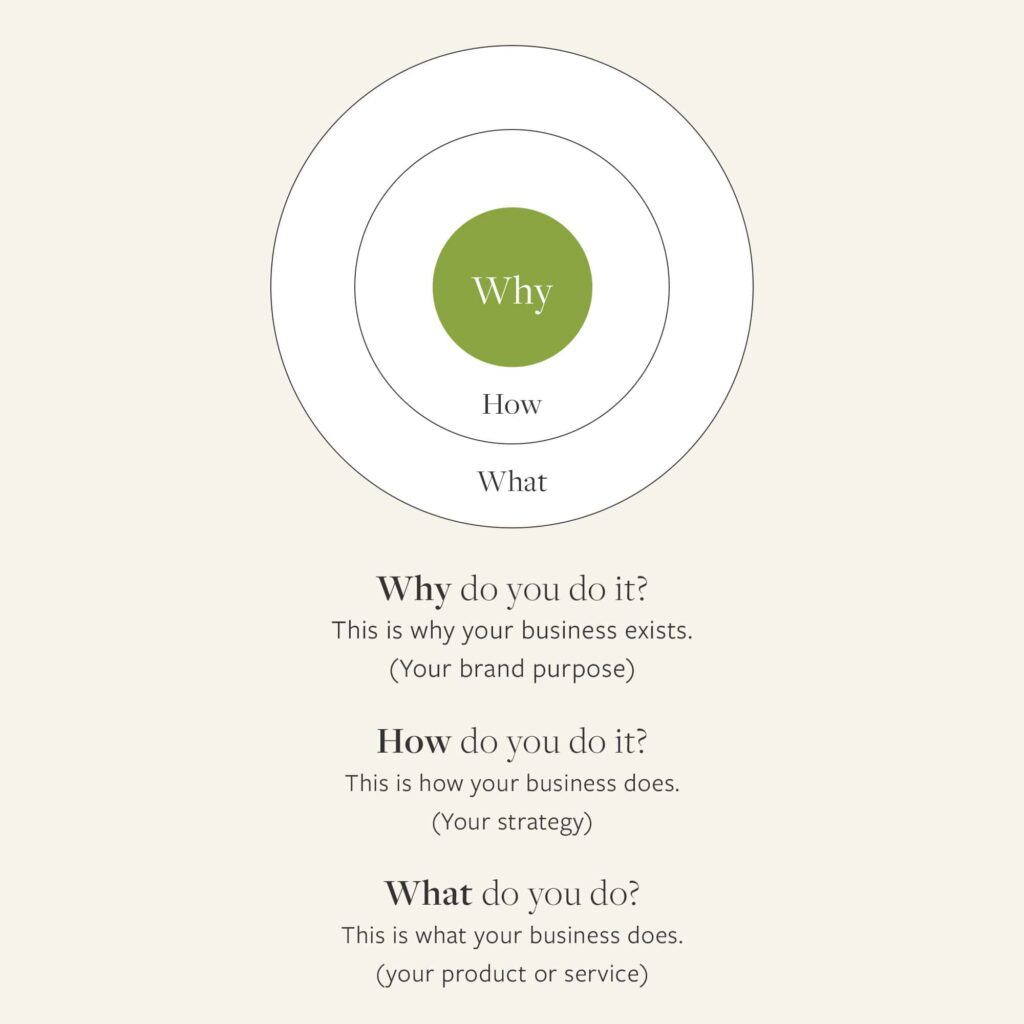The Art of Brand Inspiration (with Examples)
Welcome, my fellow entrepreneurs and brand enthusiasts! Today, I want to talk to you about the art of brand inspiration.
Building a successful brand is more than creating a logo or a catchy tagline. It's about connecting with your audience, evoking emotions, and inspiring action. But how do you achieve that? How do you go beyond the basics and create a brand that truly resonates with your target audience? That's where the art of brand inspiration comes in.
In this guide, I'll share some of the most effective strategies and techniques for inspiring your audience, building a loyal following, and taking your brand to the next level. Whether you're just starting or looking to revamp your existing brand, this guide is for you. So, let's dive in and explore the art of brand inspiration!
Table of Contents
The Essence of Brand Inspiration

Have you ever felt lost in a stormy sea, struggling to find your way? In those moments, a lighthouse can be a beacon of hope, guiding you to safety. A brand that inspires is like a lighthouse in a stormy sea, helping to guide weary travellers towards their goals and dreams. But what does it mean to be an inspiring brand?
An inspiring brand goes beyond just selling products or services. It's a brand that connects with its audience on a deeper level, tapping into their emotions and aspirations. It's a brand that understands the needs and desires of its customers and crafts its messaging and branding accordingly.
An inspiring brand creates a sense of purpose and meaning beyond just making a profit. It's a brand that strives to impact society and the environment positively and is committed to social responsibility. It's a brand that stands for something, and its values are reflected in everything it does.
Emotional connection
A brand that inspires its audience creates a meaningful relationship by tapping into their emotions and aspirations. These brands are selling products or services and telling a story that resonates with their target market. They understand their audience's needs and desires and craft their messaging and branding accordingly.
When a brand successfully creates an emotional connection, it can evoke a range of positive emotions such as trust, loyalty, admiration, and even love. For instance, think of a brand like Apple, which has built a loyal following of fans who eagerly await new product releases and will line up outside stores for hours to get their hands on the latest gadgets.
Apple's brand messaging emphasises simplicity, elegance, and innovation, which resonates with its audience and creates a strong emotional bond.
- Gobe, Marc (Author)
- English (Publication Language)
- 360 Pages – 02/09/2010 (Publication Date) – Allworth Press (Publisher)
Purpose-driven
An inspirational brand goes beyond the pursuit of profits and has a clear sense of purpose and values that guide its actions. Such brands prioritise positively impacting society and the world around them, and their mission goes beyond selling products or services. They clearly understand their societal role and are committed to making a difference.
Research indicates that companies with a strong sense of purpose are more successful in the long run. According to a study by EY Beacon Institute, companies with a clear and compelling sense of purpose outperform their peers regarding financial performance. Such companies experience higher growth rates, have more engaged employees, and enjoy greater customer loyalty.
Moreover, a survey by Cone Communications revealed that 87% of consumers would purchase a product because a company advocated for an issue they cared about. This statistic shows that customers are more likely to support brands that align with their values and beliefs. For example, a brand like Patagonia has a clear mission of environmental sustainability, and their customers support them not just because of the quality of their products but because of their commitment to social responsibility.
An inspirational brand also has a clear set of values that guide its actions. These values shape the company's culture, stakeholder relationships, and decision-making processes. By aligning their values with those of their customers, brands can build strong emotional connections with their audience.
Positive impact
The positive impact is a crucial aspect of inspirational brands. These brands strive to improve the world by using their products, services, and community engagement as vehicles for change. They recognise that their actions impact society and the environment and take responsibility for creating a positive impact.
One way that inspirational brands make a positive impact is through their products and services. They prioritise sustainable and ethical practices, such as using eco-friendly materials or supporting fair labour practices. For instance, a brand like TOMS is committed to providing shoes to people in need, and for every pair of shoes purchased, they donate a pair to someone in need. This approach has helped TOMS build a loyal following of customers who share their commitment to making a positive impact.
Another way that inspirational brands make a positive impact is through community engagement. They recognise the importance of giving back and supporting the communities in which they operate. For example, a brand like Ben & Jerry's has a long history of community engagement, supporting various causes such as environmental sustainability and social justice.
Inspirational brands create a positive impact beyond their products and services by engaging with local communities and supporting causes aligning with their values.
The Pillars of Brand Inspiration

To build an inspiring brand, you need a strong foundation. Let's take a look at the pillars that hold up this mighty edifice:
- Brand identity: Establishing a unique, memorable identity that reflects your brand's values and personality is crucial. This includes elements like your logo, colour scheme, and typography.
- Storytelling: Weaving a compelling narrative around your brand helps people connect with it emotionally. Share your brand's origin story, mission, and vision in a way that captivates your audience.
- Authenticity: Be true to your brand's values and purpose, and always communicate honestly and transparently with your audience.
- Consistency: Maintain a consistent brand experience across all touchpoints, from your website to your social media channels and customer service.
- Innovation: Keep pushing the boundaries and exploring new ways to inspire your audience. This may involve launching innovative products or services or adopting cutting-edge technologies and practices.
- Hardcover Book
- Johnson, Michael (Author)
- English (Publication Language)
- 320 Pages – 11/15/2016 (Publication Date) – Thames & Hudson (Publisher)
Learning from the Masters
Now, let's examine some brands that have successfully turned themselves into inspirational powerhouses and see what we can learn from them:
Apple: Think Different

It's a great example of how a brand can inspire people to think outside the box and challenge the status quo. The campaign was launched in the late 90s and positioned Apple as a brand for creative, innovative thinkers.
The “Think Different” campaign featured a series of ads featuring famous icons like Albert Einstein, Martin Luther King Jr., and John Lennon. The ads celebrated the accomplishments of these visionary individuals and encouraged people to think differently and pursue their own creative ideas.
Apple's “Think Different” campaign was a huge success and helped to establish the brand as a leader in innovation and design. It also demonstrated how a brand could use its messaging to inspire and motivate its audience rather than sell products.
Apple's continued commitment to innovation and design has helped the brand maintain its status as a leader in the tech industry. From the sleek design of its products to its emphasis on user experience, Apple has built a loyal following of fans drawn to the brand's commitment to quality and innovation.
Key takeaways:
- Use powerful, thought-provoking messaging that resonates with your target audience.
- Encourage your customers to see themselves as part of a larger, like-minded community.
Patagonia: Protecting the Environment

If you care about the environment, you've probably heard of Patagonia. This outdoor clothing brand has built a loyal following of customers who share their commitment to environmental sustainability. They've managed to do this by putting the environment at the heart of their business.
One of the ways Patagonia shows their commitment to the environment is by donating 1% of its sales to environmental causes. That's right – for every item sold, a portion of the proceeds goes towards supporting organisations working to protect the planet. This commitment to environmental causes is rare in the fashion industry, where profit margins often prioritise social responsibility.
In addition to its philanthropic efforts, Patagonia also promotes sustainable practices in their operations. They use eco-friendly materials in their products and prioritise fair labour practices in their supply chain. By doing this, they can reduce their environmental impact while also promoting ethical business practices.
Patagonia's commitment to environmental sustainability has helped to build a loyal following of customers who share their values. Many customers are willing to pay a premium for their products because they know their money is going towards a good cause.
Key takeaways:
- Embrace a cause that aligns with your brand values and actively contribute to it.
- Educate your audience about the importance of the cause and how their support makes a difference.
Nike: Just Do It

When you think of the Nike brand, what comes to mind? For many people, it's the iconic “Just Do It” slogan. This simple yet powerful tagline has become synonymous with perseverance, determination, and self-belief. Nike has inspired millions to pursue their dreams by aligning its brand with these values.
The “Just Do It” campaign was launched in 1988 and quickly became a cultural phenomenon. The campaign featured a series of ads that showcased athletes pushing themselves to the limit, accompanied by the tagline “Just Do It”. The message was clear – if you have a dream, go out and make it happen.
Nike's “Just Do It” campaign has been an enormous success, and it's helped to establish the brand as a leader in the sports industry. The tagline has become a cultural touchstone, inspiring athletes and non-athletes to pursue their goals passionately.
In addition to its inspiring brand messaging, Nike has been a leader in innovation and design. From the iconic swoosh logo to their groundbreaking products like the Air Jordan sneakers, Nike has built a reputation for pushing boundaries and setting trends.
Nike's commitment to inspiring and empowering its customers has helped them build a loyal following of fans drawn to the brand's perseverance, determination, and self-belief values. By aligning its brand with these values, Nike has created a powerful emotional connection with their audience, inspiring millions to pursue their dreams and reach their full potential.
Key takeaways:
- Encapsulate your brand's values in a simple, memorable slogan that can be easily repeated and shared.
- Leverage the power of storytelling to showcase real-life examples of people embodying your brand's values.
The Road to Brand Inspiration

Ready to turn your brand into an inspirational powerhouse? Follow these steps:
- Assess your current brand: Evaluate your brand's strengths, weaknesses, opportunities, and threats (SWOT analysis). Identify what sets you apart and areas where you can improve.
- Define your brand values and purpose: Clearly articulate your brand's core values and overarching goal. This will serve as the guiding light for all your future branding efforts.
- Craft a compelling brand story: Develop a captivating narrative communicating your brand's values, purpose, and unique selling proposition. Use storytelling techniques to make it engaging and memorable.
- Create a consistent brand identity: Design a visual identity that reflects your brand's values and personality. Ensure consistency across all your brand assets, from your logo to your website and marketing collateral.
- Develop inspiring content: Produce content that educates, entertains, and inspires your audience. This can include blog articles, videos, social media posts, and more.
- Engage with your audience: Establish an ongoing dialogue with your customers and followers. Respond to their questions, comments, and feedback, and encourage them to share their stories and experiences.
- Monitor and measure your progress: Regularly track your brand's performance using key performance indicators (KPIs) and adjust your strategy to continue moving toward your goals.
- Continuously innovate: Stay ahead of the curve by exploring new ways to inspire your audience, whether through new products, services, or experiences.
In Conclusion
Transforming your brand into an inspirational powerhouse may seem daunting, but it can yield incredible rewards. By establishing a solid brand identity, crafting a compelling story, and consistently delivering on your brand's values and purpose, you can create an emotional connection with your audience that inspires loyalty, trust, and admiration.
Remember, the road to brand inspiration is not a one-time journey but a continuous process that requires constant evaluation, innovation, and adaptation. So strap in, enjoy the ride, and let your brand shine as a beacon of inspiration for others.
Last update on 2024-05-04 / Affiliate links / Images from Amazon Product Advertising API


